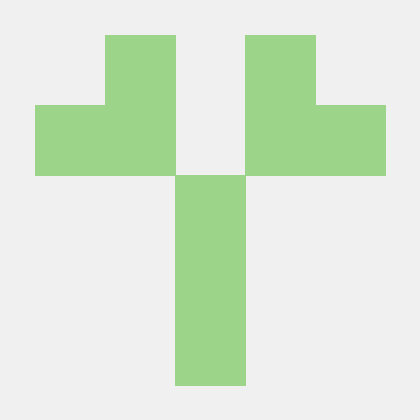Thank you for taking the time to read this guide. We are happy you wish to contribute to this project 🥳 !
We value all contributions, and we hope the following sections will give you clarity on how you can contribute.
This project adheres to the Contributor Covenant code of conduct. By participating, you are expected to uphold this code.
Our code of conduct is available
at
Please take some time to familiarise yourself with the components in MaEVe. These are in the README's documentation section.
You will need to have Go 1.20 installed in your development machine. Instructions are available on the Go website
MaEVe components can be run through a docker-compose file, hence you will require Docker on your machine. We mostly use MacOS and run the docker daemon using Colima.
Additionally, you will require the compose plugin to run the containers listed in the docker-compose file.
Currently, the docker-compose file provisions the following in addition to the Manager and Gateway components:
-
This is used to decouple the stateful connections required by OCPP from the stateless message handlers. The system currently connects to the MQTT broker anonymously.
-
The system uses Firestore as a storage engine for persistence layer.
-
A load balancer implemented through envoyproxy to load balance calls coming from the charge stations and allowing the system to perform better under high demand.
Whilst the components can be run through Docker, if you wish to run locally without containerising them, you can run the following command:
$ go build ./...You will need to run this from the correct sub-directory (e.g. ./gateway or ./manager)
Each Go project contains a set of tests that are run when a commit reaches the remote repository. These tests also run as part of our git hooks before committing to the local repository.
If you wish to run the unit tests manually, you can run the following:
go test ./...The project also has integration tests to validate integration with third party services. Some of those tests use TestContainers, thus require Docker.
Please ensure the docker daemon is running on your machine before running these tests.
export TESTCONTAINERS_DOCKER_SOCKET_OVERRIDE=/var/run/docker.sock
export DOCKER_HOST=$(docker context inspect -f '{{ .Endpoints.docker.Host }}')
go test ./... --tags=integrationBugs are reported and tracked via GitHub issues. Please use this platform to report any issues to our community.
When reporting a bug, please provide the following information about your environment setup:
- Operating System (OS) and version
- Code version you are using
- Steps to reproduce the issue and any additional guidance
Our team will periodically review and prioritize reported issues for resolution.
For support, please contact us at [email protected]
Please follow these steps to submit your changes:
Note: While we generally follow a pull request model for contributions, contributors from the core team who are more familiar with the project and the component external interfaces are welcome to follow trunk-based development.
-
Fork the repository by clicking the "Fork" button on the repository's page.
-
Work on your own repository fork following our guidelines listed on this page until you are satisfied with your work (e.g. a feature has been completed, or a bug is now fixed)
-
Create a pull request on this repository and provide a descriptive title with a detailed description of your changes. Additionally, please make sure that you reference the issue, if present, that your contribution is solving.
Our team will be happy to review your changes and work together to make them available to the rest of the community.
Please make sure you have configured the following hooks on your development environment. They ensure that, in addition to scanning the code for vulnerabilities and code smells, all contributors adopt the same code style.
You will first need to install the pre-commit framework in order to configure the git hooks.
Then, from the root of the repo, you can run the following:
$ go install honnef.co/go/tools/cmd/staticcheck@latest
$ go install golang.org/x/tools/cmd/goimports@latest
$ go install github.com/securego/gosec/v2/cmd/gosec@latest
$ pre-commit install && pre-commit install --hook-type commit-msgCommit messages should follow the Conventional Commits specification.
Additionally, please ensure that the body of your commit message explicitly and succinctly communicates to other contributors what your change is about. This will us keep commits small and centered around something specific we are working on.
For example, you can check out this commit as a reference to what a good commit looks like.
Please note that all verbs should be at the present tense e.g. Add / Adding / Added .
Core contributors (not in any specific order):








